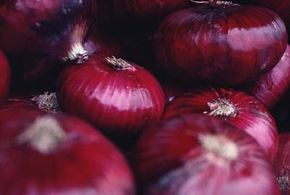Bacon has long been touted as a cure-all for various ailments. Using bacon fat to draw out infections is one traditional folk remedy that has persisted over the years. But is there any scientific proof that rendered bacon grease can help treat boils, skin infections, or other medical conditions? Let’s dig into the evidence behind this age-old home remedy.
The Origins of Bacon Fat as a Medical Treatment
The practice of using bacon or other animal fats to treat infections dates back centuries. Before modern antibiotics and wound care, people had to rely on natural substances in their environment to treat common injuries and illnesses
Animal fats like lard or tallow were readily available in most homes. Their waxy water-resistant properties seemed to provide a protective barrier when applied topically. And the high salt content of cured pork products like bacon may have helped draw out fluid and “pull” infections to the surface.
Reference to bacon fat remedies can be found in old folk medicine compendiums and household guides from the 1800s and early 1900s. Traditionally it was used to help ripen boils and abscesses and draw out “bad humors.”
Even once antibiotics arrived on the scene, some people continued using bacon fat poultices and plasters, perhaps out of habit or tradition. But is there solid scientific proof that they work?
Does Modern Science Support Bacon Fat as an Infection Treatment?
There is currently no peer-reviewed medical research demonstrating that bacon fat is an effective remedy for infections. However, there are a few reasons why it may provide minor benefits when used topically:
-
Salts – The sodium content in cured bacon may help draw out a small amount of fluid from the skin, reducing pressure and swelling. But regular table salt can do the same thing.
-
Occlusive barrier – Greasy bacon fat may help trap moisture and protect irritated skin and minor wounds while also keeping out dirt. However, petroleum jelly can achieve the same effect without the mess.
-
Mild warmth—The body’s temperature melting the fat may make you feel better on the outside. But a warm compress would work equally well.
So while bacon fat may have some minor physical effects, there is no evidence that it “draws out” infections or has any direct anti-bacterial properties when applied to the skin. Its use for treating boils, abscesses, or infected wounds is not recommended.
Risks Associated with Using Bacon Fat to Treat Infections
Putting bacon fat on the skin is usually safe, but there are a few things you should know about the risks:
- May transmit bacteria from pork to open wounds
- Can trigger allergic reactions in those with pork allergies
- Provides a breeding ground for microbes in the grease
- Can cause burns if applied hot
- Leaves a lingering unpleasant odor
Overall, bacon fat is not worth the risks it poses compared to more sterile, proven medical treatments. Greasy bacon plasters have no advantage over antibiotic ointments, hydrocolloid bandages, or other modern methods for treating infections.
When to See a Doctor for Infections
While home remedies may provide comfort, infections require proper medical treatment. See a doctor promptly if you experience:
- Fever, spreading redness, warm skin, or pus
- Boils or abscesses that worsen or fail to improve
- Signs of a skin infection like a stubborn rash, wound, or blister
- Difficulty breathing, high fever, or confusion
- Infection following a dog or cat bite
- Infection in patients who are very young, elderly, pregnant, or immunocompromised
If you don’t treat small skin infections, they can get worse and lead to cellulitis, sepsis, and other life-threatening problems. Relying on unproven home treatments like bacon fat delays proper medical care.
The Verdict: Bacon Fat is Not an Effective Infection Remedy
While using bacon fat to draw out infections may seem like a time-tested folk cure, current scientific evidence does not support its efficacy or safety. At best, it may have minor physical effects on boils or skin irritation. But greasy salt pork has no specific antibacterial properties, and it carries contamination risks. For treating infections, trust modern antibiotics, wound care, and your doctor’s advice rather than questionable pork fat plasters. Be sure to seek prompt medical attention if any infection looks concerning or persists.

Home Remedy Treatments for Boils
The following home remedies are simple to find and will help ease some of the pain of boils. In fact, you can prepare them just before your breakfast!.
Home Remedies From the Refrigerator
Bacon. The fat and salt content of salt pork are believed to help bring boils to a head. Roll some salt pork or bacon in salt and place the meat between two pieces of cloth. Apply the cloth to the boil. Repeat throughout the day until the boil comes to a head and drains. This can be messy.
Eggs. The whites of hard-boiled eggs were used for treating boils in the nineteenth century. After boiling and peeling an egg, wet the white and apply it directly to the boil. Cover with a cloth.
Milk. Add 3 teaspoons of salt slowly to 1 cup of hot milk. If you add the salt too quickly, the milk will curdle. Simmer the milk for ten minutes. Then add flour or crumbled bread pieces to thicken the mixture. Divide the mixture into 4 poultices and apply 1 to the boil every half-hour.
Onion. The strong onion smells bad and has chemicals that kill germs and irritate the skin to draw blood and “heat” things up. Cut a thick slice of onion and place it over the boil. Wrap the area with a cloth. Change the poultice every three to four hours until the boil comes to a head and drains.

